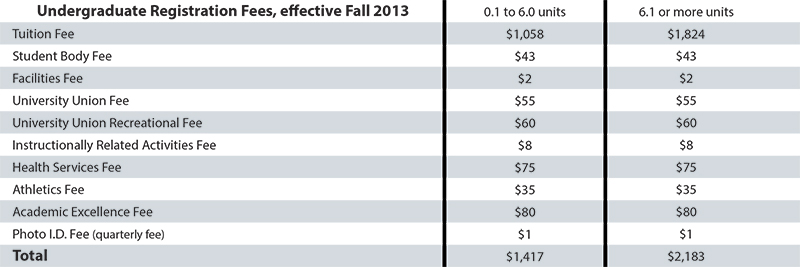Self-funded classes offered for summer quarter
Source: California State University, East Bay
June 5, 2014
The Planning and Enrollment Management office at California State University, East Bay announced May 12 that some of this year’s summer course listings will be self-support instead of regular tuition, changing the amounts students will pay for summer courses.
PEM sent a campus-wide email informing students that select undergraduate courses will be offered through a self-support financial system that does not use the limited California state funding, but instead pays for itself through the revenue the classes generate. PEM officials refused to speak with The Pioneer regarding summer self support.
By reducing the number of summer courses offered, the colleges will be able to move resources into the academic year and offer more courses to meet student demand during the other three quarters.
“Enrollment has grown over the past three years,” said Jeff Bliss, executive director of University Communications and University Advancement. “Our most recent projection is that the University will end this year, seven percent over the target set by the Office of the Chancellor.”
The over enrollment is a direct result of an increasing number of new students, an increase in student retention and an increase in average student class load, said Bliss.
According to Bliss, students that register for summer 2014 will pay less than or similar to regular tuition cost depending on the number of units taken. Self-support must be paid in full, in contrast to regular tuition, which can be broken up into payments. Summer quarter self-support can be paid with financial aid, but only through federal support, not state.
Instructional self-support fees for undergraduate students will be $181 per unit in summer, while graduate students will pay $246 per unit. This also includes five-week courses, which are exclusive for summer sessions.
Self-support fees do not include non-resident fees or graduate professional program fees. Certain campus facilities or services such as the RAW Center and the Student Health Center, will apply fees to students on an as-used basis. This is not the case in fall, winter, and spring under regular tuition guidelines.
“We are most likely to exceed the target again in 2014-15,” said Bliss. “Especially if we do not make other adjustments in managing our enrollment.”
Gov. Jerry Brown’s latest revisions in the May budget allocates an increase of $142.2 million to the CSU system, which falls short of the $237.6 million requested by the CSU Board of Trustees in November.

















